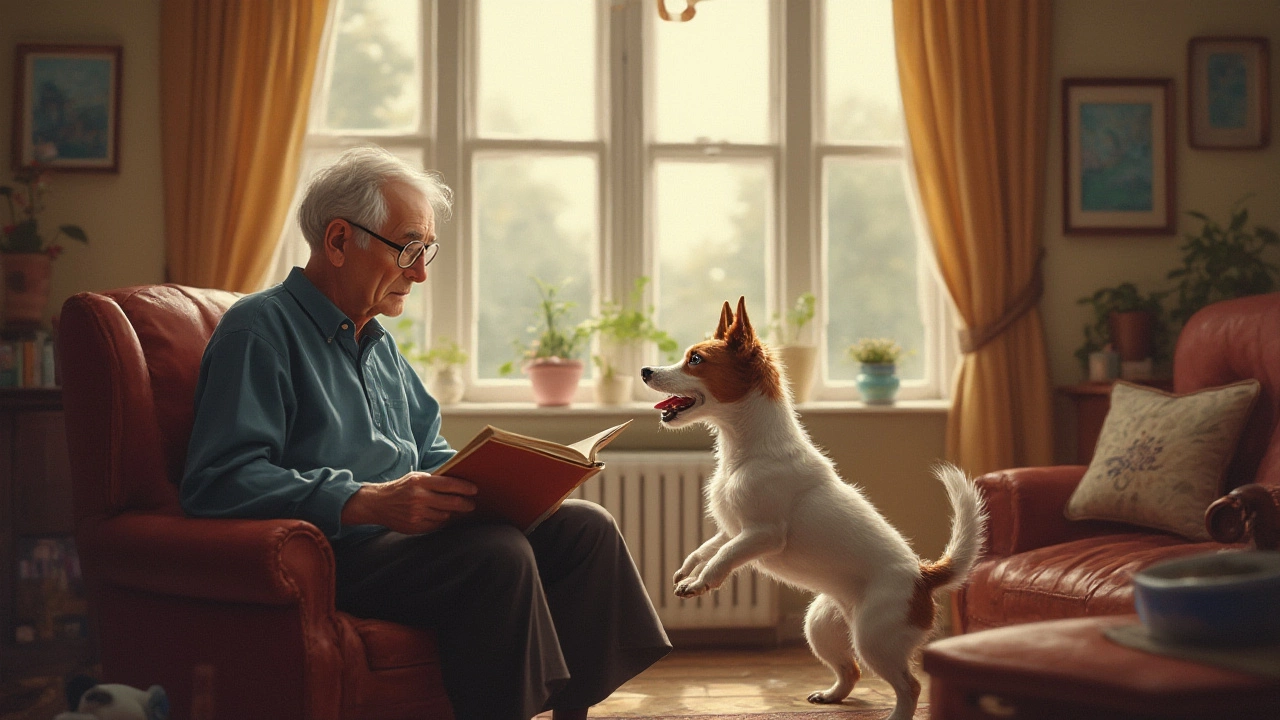If you’ve ever tried binge-watching a show with a dog barking his head off, you know how fast your patience can disappear. Barking tops the list of canine quirks that frustrate owners—and neighbors—sometimes more than muddy pawprints or chewed shoes. Barking isn’t random, though. It’s how dogs talk to us and the world, but sometimes, the message is just a wall of sound. Cutting through the noise to figure out what really stops dogs from barking takes more than a stern “Quiet!” or whatever tip you scroll past on pet forums. Maybe you’ve already tried gadgets, treats, even pleading with your pooch as if he understands English fluently. Here’s the deal: no magic device or whispered command will solve it for every dog, but there are proven strategies grounded in science, real experience, and a little common sense. The path to hush isn’t about shutting your dog down, it’s about tuning into why they’re barking—and working with that, not just against it.
Why Dogs Bark: Behind the Noise
Start with this: dogs aren’t trying to ruin your life. Barking is about communication. Some dogs blurt out warnings when the mail carrier walks by. Others holler when they spot a squirrel, or when you dare leave the house. And then there are dogs who treat every hour like karaoke night. Each bark, from yaps to thunderous woofs, signals something going on in your dog’s world. Scientists and trainers have nailed down a few main reasons dogs bark: alert and warning barking ("Hey, someone's here!"), anxiety or fear (think thunderstorms or being left alone), attention-seeking ("Look at me! Play with me!"), boredom, and sometimes just pure excitement. It’s not random noise, even if it feels like it at 2AM.
About 35% of dogs, according to a huge UK study published in Applied Animal Behaviour Science, bark excessively at least once per week. That’s not your imagination—plenty of folks are in the same boat. Some breeds like Beagles, German Shepherds, and Terriers tend to be natural vocalists, thanks to what they were bred to do (think hunting or shepherding). On the other hand, Basenjis, nicknamed the "barkless dog," really do bark less, though they might yodel instead. Age, health, and environment play roles too. Senior dogs may bark when confused or in pain, and younger pups usually make more noise as they learn how to dog.
So, yes, it really comes to knowing your dog. If you’ve just moved or if your work schedule has changed, barking might ramp up because your dog is anxious about the new routine. If your living room window faces the street, expect some barking when people pass. And recall that those high-frequency barks lasting less than a second are usually attention-seeking, while longer, drawn-out barks might mean there’s anxiety underneath. It's almost never about the sound for its own sake—it’s your dog's version of texting you (albeit with more echo and less grammar).

What Actually Works (and What Doesn’t)
There’s a wild market for "stop barking now" products, from collars that squirt citronella to gadgets claiming to translate dog barks. The truth is, those quick fixes rarely solve the root cause and sometimes make things worse by piling on stress or fear. The American Veterinary Society of Animal Behavior basically says: skip punishment devices. Not only do shock or spray collars risk souring your bond with your dog, they often backfire, making your pup sneakier or more anxious. The key isn’t silencing your dog at all costs—it’s addressing the why.
The gold standard is positive reinforcement. That means you give your dog a reason to be quiet, and reward them when they do it. Say your dog barks at the window. Instead of yelling back, wait for a brief pause (hard, I know), then toss a treat their way. Consistency is your best friend here—reward the silence, not the noise. A University of Lincoln study in 2018 found most owners saw improvements within a week using this method, while punishment strategies scored far lower.
Training the “quiet” command takes patience but it pays off. Here’s a simple method:
- Let your dog bark a couple times at a trigger (doorbell, neighbor, whatever), then say “Quiet” in a calm, firm voice.
- Usually, they take a breath or pause—immediately reward that moment of silence with a treat and praise.
- Repeat in short bursts, keeping sessions upbeat and never dragging on so long that you both get frustrated.
- Gradually increase the time your dog has to stay silent to get the reward.
Sound simple? It is. But the trick is repetition and not losing your cool. Dogs sense frustration, and yelling either scares them or convinces them you’re just joining in the racket. If you want to get technical, think like a scientist: you’re shaping behavior, not flipping a switch.
Sometimes, barking is a job for management more than training. If your dog loses his mind seeing people through the window, try blocking the view, or put up a decorative privacy film—those cheap stick-on ones you can buy online. Got a dog who barks from boredom? Tire him out before you leave for work with a long walk or some fetch. Leave puzzle toys or treat-dispensing balls behind when you go out. Boredom is a major cause of nuisance barking, and mental activity is just as important as exercise. Try freezing peanut butter in a Kong toy—the effort tires out both mind and mouth.
What about social barking? Some dogs just want to chat with the world. Setting up play dates with other dogs or adding variety in their routes can help take the edge off. Doggie daycares often report that social, mentally and physically active dogs are less noisy at home versus pups who rarely see or sniff anything new.
Now, for a bit of tech: white noise machines or classical music do help some anxious barkers by masking outside sounds that trigger chaos. It’s not a cure, but it’s part of the toolbox.
One thing that doesn’t work? Trying to convince your dog that barking is "bad". They simply don’t know the concept of right and wrong the way we do. They understand what nets them good stuff (treats, play, attention), and what doesn’t.

Real-Life Tips and Humane Tools to Reduce Barking
Personal story time. A few years ago, I had a terrier named Wally who could beat any car alarm for volume and persistence. We tried store-bought gadgets, new leashes, and even online dog ASMR tracks—no dice. The only lasting fixes were ramping up exercise, teaching “quiet” paired with a killer reward (freezer chicken bites), and, believe it or not, setting a predictable routine so he didn’t panic whenever we left.
So, what’s in the real bark tool kit? Here are proven, dog-friendly options:
- Stop dogs from barking by practicing the "quiet" or "enough" command, always using treats or affection to reinforce what you want.
- Up your physical activity—aim for at least one good, long walk and some off-leash play (secure area only, of course). Tired dogs bark less.
- Block daytime triggers like street views or neighbor pets. Cheap DIY window film can work wonders.
- For separation anxiety, start practicing short departures and calm returns. Don’t make a fuss about leaving or coming home—no guilt trips.
- Food puzzles aren’t hype—they turn meal time into a brain workout, distracting and draining energy.
- If barking is sudden or out of character, visit your vet. Sometimes pain, hearing loss, or cognitive issues are the real reason.
- Don’t underestimate dog-training classes. Group classes are great for leash manners and focus, which often spill over to better behavior at home.
Skip the weird gadgets—no need for shock collars, ultrasonic noise generators, or mysterious sprays. Not only are they hit-and-miss, but the science just isn’t there for most of them—and some can actually make barking worse by creating fear around everyday events like doorbells ringing.
And, don’t ignore your dog’s personality. Some are naturally chatty. For these guys, "quiet moments" can be stretched gradually, but expecting zero barking isn’t realistic. It’s about reducing nuisance barking, not muting your pup completely. If barking becomes all-consuming and nothing helps, a session with a certified dog behaviorist can spot patterns and triggers that plain old training might miss.
In the end, real solutions take patience and a dash of empathy. Most dogs aren’t barking to ruin your day—they’re trying to tell you something in their own way. The fastest fix is listening: what’s the trigger, and how can you answer it better next time?







